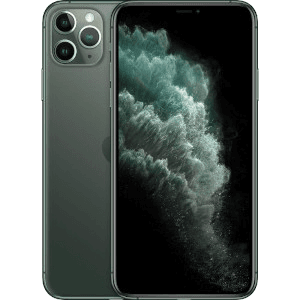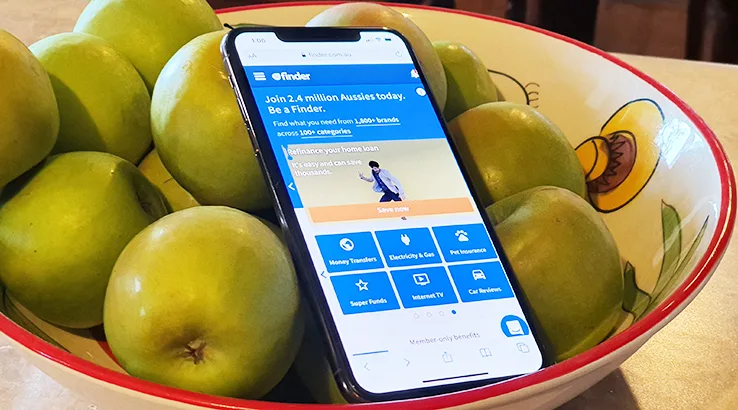Apple iPhone 11 Pro Max review: Features | Specifications | Pricing

-
- Battery Score
4
- Camera Score
4.5
- Design Score
4
- Performance Score
4.5
- Battery Score
4
Summary
If you've been holding out on an iPhone upgrade, the iPhone 11 Pro Max is an easy recommendation, but you've got to be willing to open your wallet up wide to get one.
The good
- Best battery life in an iPhone to date.
- Triple camera gives plenty of photographic flexibility.
- Improved low light photography.
- Exceptional video quality.
- A13 Bionic is a beast of a processor.
The bad
- It's very expensive.
- No onboard 5G.
- No warranty coverage for water ingress.
- Low light shooting is better on several Android handsets.
Details
Pricing & Availability
| Launch price (RRP) | $1,899 |
| Launch date | 2019-09 |
The Apple iPhone 11 Pro Max is the flagship of Apple's 2019 smartphone range. It's the biggest and boldest of Apple's line-up to date, with a price point to match. Apple's hype would have you believe it's the best smartphone that money can buy.
How true is that? There's a lot that's highly laudable about the Apple iPhone 11 Pro Max, especially if you're coming from the perspective of simply looking at iPhones. The camera is much better, and likewise battery life has improved markedly. As an upgrade option, it's a fine prospect.
However, compared against the wider smartphone space it's a far more mixed question, especially at the iPhone 11 Pro Max's high asking price.
Design
- A gentle revision of the existing iPhone design.
- Triple camera is a love it or loathe it proposition.
- Improved water resistance, but no real water warranty protection to back it up.
- Smaller range of colour choices than iPhone 11.

Camera
- Triple lens is new for Apple and provides lots of photo options.
- Low light performance has improved massively, but it's still not the best.
- Great for video shooting.
- An easy camera for capturing good photos.

Performance
- Apple A13 Bionic is a beast of a processor.
- iOS 13 is easy to use with a great array of apps.
- It's still Apple's walled garden to play in.
- Finally properly eSIM across all Australian carriers.
- At this price, the lack of 5G hurts.

Battery life
- 3969 mAh battery actually exceeds Apple's own claims.
- Not quite best in class, but a huge leap forward for iPhone battery life.
- Apple may have considered wireless reverse charging, but it's not implemented (yet).
- Fast charger in box for the 11 Pro.
- Wireless charging supported.

Apple iPhone 11 Pro Max: Should you buy it?
- Apple's best phone in quite some time.
- High price is a serious problem if you're looking across the whole smartphone market.
- Not a critical update for iPhone XS or iPhone X owners.

Pricing and availability
- Price: From $1,899 RRP
- Where to buy: Apple | eBay | JB Hi-Fi | Kogan | The Good Guys | Bing Lee
Compare iPhone 11 Pro Max plans
You can also purchase the Refurbished Apple iPhone 11 Pro Max on a handset repayment plan from numobile.
Apple iPhone 11 Pro Max: Alternatives
If you're looking to stay in the iOS camp, you do have a number of choices. The Apple iPhone 11 Pro is ostensibly the same device, but with a smaller display and battery capacity. You can read everything you need to know about the Apple iPhone 11 Pro here.
Then there's the Apple iPhone 11, this year's more "affordable" (within Apple's rather limited understanding of that term) iPhone model. That drops the screen to LCD and loses a camera lens and battery capacity as well relative to the iPhone 11 Pro Max, but it's significantly less expensive. You can find out everything you need to know about the Apple iPhone 11 here.
The arrival of the iPhone 11 generation has seen Apple cull last year's crop of iPhones, with only the Apple iPhone XR surviving. You can read our full review of the Apple iPhone XR here.
If you're happy to travel further afield than just iOS, the asking price of the iPhone 11 Pro Max means you can have just about any phone you'd care to name.
If you're after a phone with superior low light capability and battery life, consider the Huawei P30 Pro.
If you want good battery life in a 5G-capable handset, consider the Oppo Reno 5G.
If you're after a phone with a strong productivity focus and 5G options, the Samsung Galaxy Note10+ might be the phone for you.
Apple iPhone 11 Pro Max Specifications
Display
Camera
Physical Dimensions
Connectivity
Power, storage and battery
Device features
Latest news

How to get the iPhone 14 at a discount in Australia
Find out where you can buy the iPhone 14 outright and at lower prices.
Read more…
Apple iPhone 14: Which model should you buy?
Which among Apple's 4 new iPhone models is best for you?
Read more…
iPhone 14: Australian specs, pricing and release date
Here's what you'll pay, what you'll get and when you can get an Apple iPhone 14 in Australia.
Read more…

















